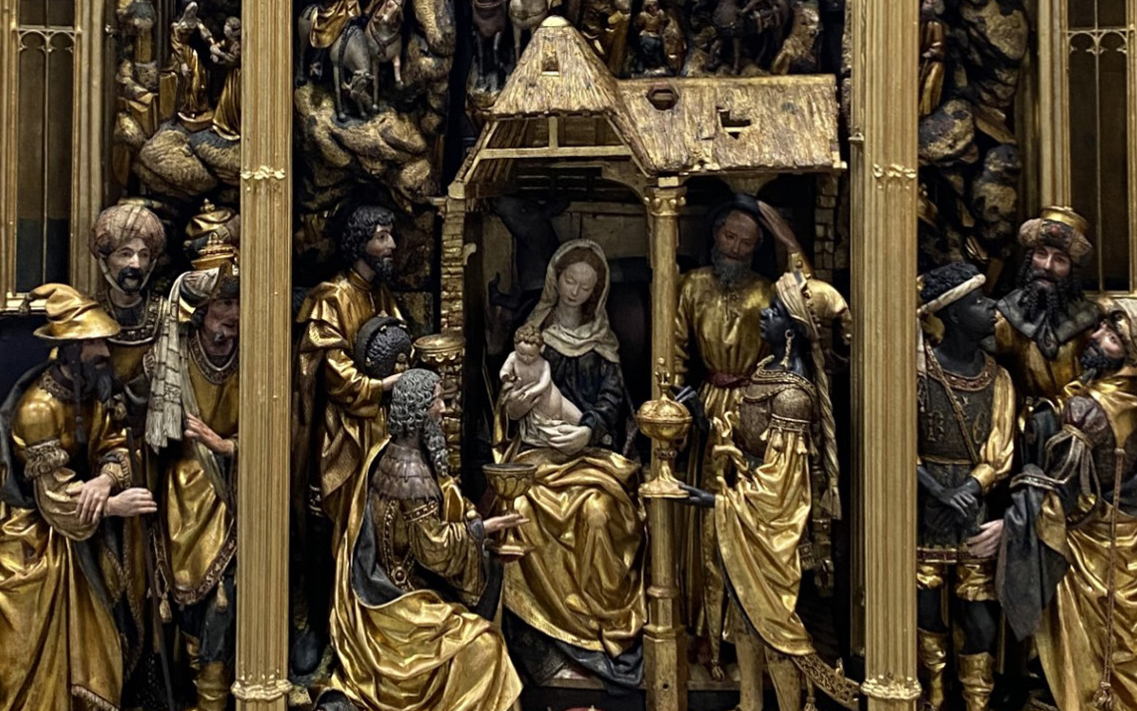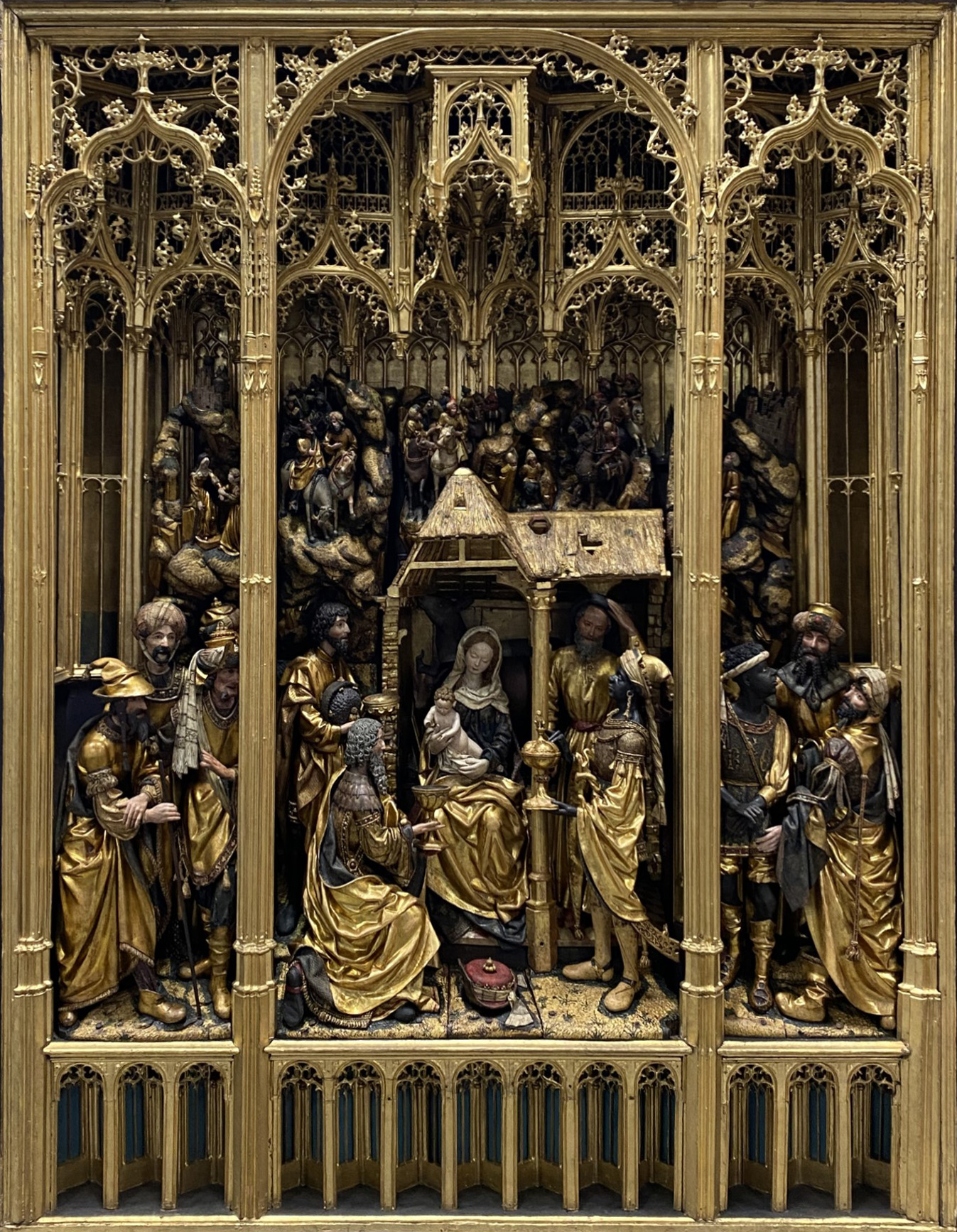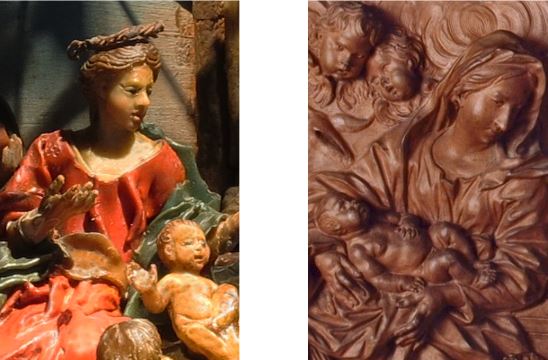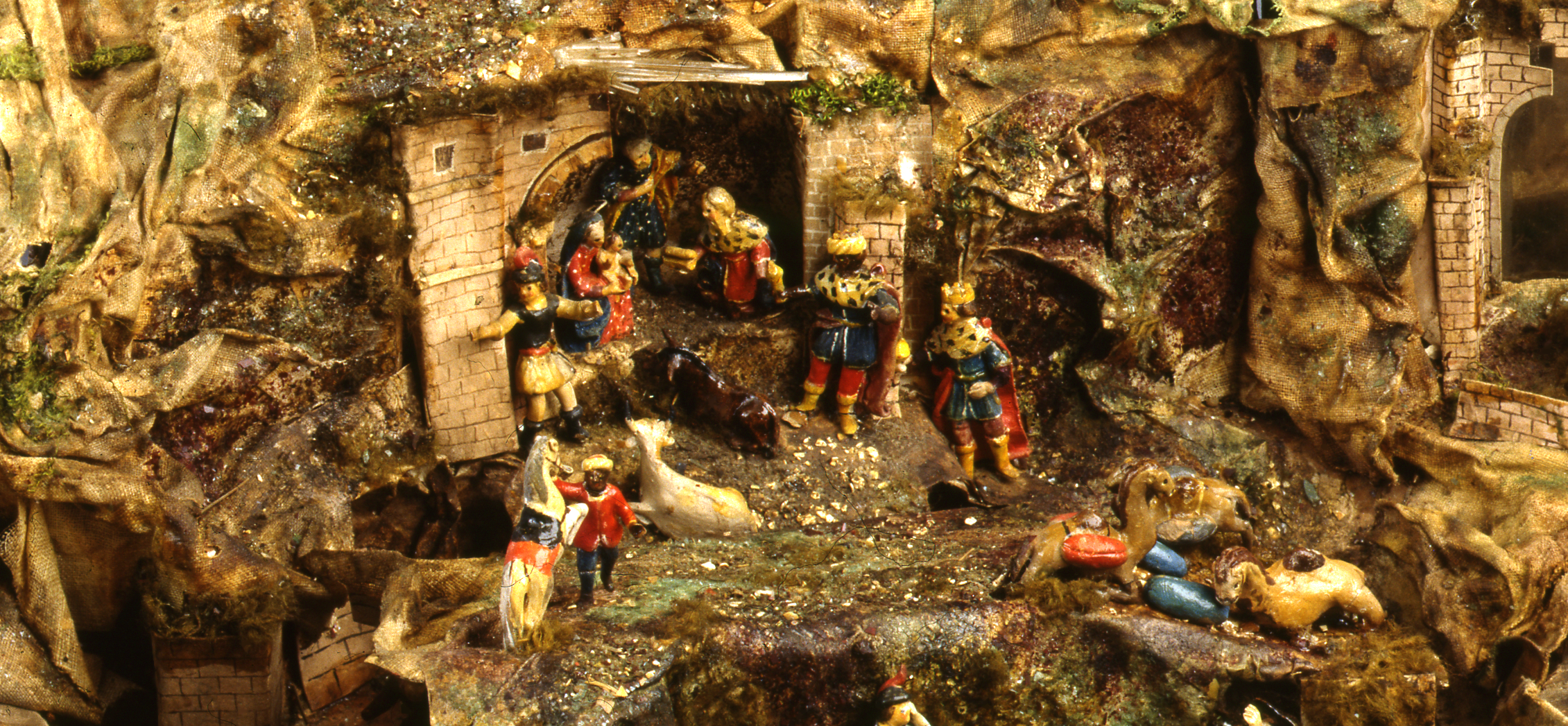
ADORATIONS & ADORATIONS
As already announced, after the great acclaim received last December, the exhibition ADORATIONS – Small Theatres of Private Devotion, promoted and organised by Galleria Cesati, is extended and will be open throughout the month of January.
At the same time, also throughout January, the city of Milan offers the absolutely unique opportunity to admire two other extraordinary Adorations at the Museo Diocesano Carlo Maria Martini: the beautiful Adoration of the Magi painted by Sandro Botticelli, from the Uffizi Galleries in Florence, and a magnificent wooden Altar of the Magi, an absolute masterpiece of Flemish sculpture, from the Basilica of Santi Apostoli e Nazaro Maggiore in Milan.

While the painting, made by the one of the most representative artists of the Italian Renaissance around 1475 for a chapel of the Church of Santa Maria Novella in Florence, is a well-known and celebrated artwork, of which almost everything is known, we cannot say the same about the paternity of the monumental wooden Retable, which has long remained uncertain and confused. Only recently, also following an important and lengthy restoration, this work has been definitively identified as a masterpiece by the famous Flemish artist Jan II Borman (c. 1460 – c. 1520).
And it is truly an exceptional sculpture because – in addition to being one of the very rare examples of its kind preserved in Italy, having remained in its original location for more than five centuries – it is considered the only example in the world from the famous workshop to have preserved the original polychromy and decorative finishing.
The artwork centres around a single large scene dedicated to the Epiphany with numerous figures sculpted all in round, in profile, three-quarter view and from behind, then finely painted and gilded. As many as nine if not eleven Magi – a truly unusual number compared to the classic three – dominate the foreground at the sides of the Holy Family, according to different poses, costumes and attributes in which the naturalism of the physiognomies and the elegance of the details stand out. In the background, on the other hand, anecdotal characters and events taken from the Holy Scriptures are depicted, such as astronomers observing the sky and the episode of Salomè meeting an old woman.

In addition to the high artistic quality, what is also surprising and fascinating is the story of its presence in Milan, the city where the Retable arrived thanks to Protrasio Bonsignori da Busto, a wealthy glass and metal merchant, who purchased – or commissioned – the work after a trip to Antwerp in 1510 with the idea of placing it in his own chapel, built that same year in the oratory of the Basilica complex of Santi Apostoli e Nazaro Maggiore in Milan.
Before returning to the Milanese Basilica, this incredible work of art is now on public display for the first time in Italy at the Museo Diocesano in Milan, after a long and important restoration (2022-2023) conducted at the Institut Royal du Patrimoine Artistique (IRPA) in Brussels, thanks to the support of the Fondation Roi Baudouin, the Fondation Périer-d’Ieteren and Intesa Sanpaolo, which enabled the work to regain its original appearance.
The expert Belgian restorers worked on several previous 18th and 19th century restorations, which had completely covered the work with a thick brown varnish and gold leaf gilding. By removing these components, they were able to bring the work back to life, recovering the refined polychromy, the gilding and all the sophisticated decorative techniques originally used in its creation, such as the brocades and embroideries carved in relief, the punching and even the small applications of gilded metal elements or very rare resin and wax beads.

While the two outstanding Adorations on display at the Museo Diocesano are rare gems of Renaissance art, those brought together by Galleria Cesati, although including some 16th-century works, are mainly sculptures made of different materials, dating back to the late Baroque age: artworks that all have in common that they were created for private devotion of noble people who commissioned them, moved by the profound desire to relive, even in their own important residences, that pathos and emphasis intimately connected to the theme of Adoration.

THE RETABLE OF THE MAGI
from the Basilica of the Holy Apostles and Nazaro Maggiore in Milan
Milan, Museo Diocesano Carlo Maria Martini, Piazza Sant’Eustorgio 3 – MM4 Vetra
Until 2 February 2025
Tuesday – Sunday
10 a.m. – 6 p.m.
ADORAZIONI – Small Theatres of Private Devotion
Milan Via San Giovanni sul Muro 3, Milan – MM1 Cairoli
Until 1 February 2025
Tuesday – Saturday
10 – 13 and by appointment
© 2013 – 2024 cesatiecesati.com | Please do not reproduce without our expressed written consent
Alessandro Cesati, Via San Giovanni sul Muro, 3 – 20121 Milano – P.IVA: IT06833070151